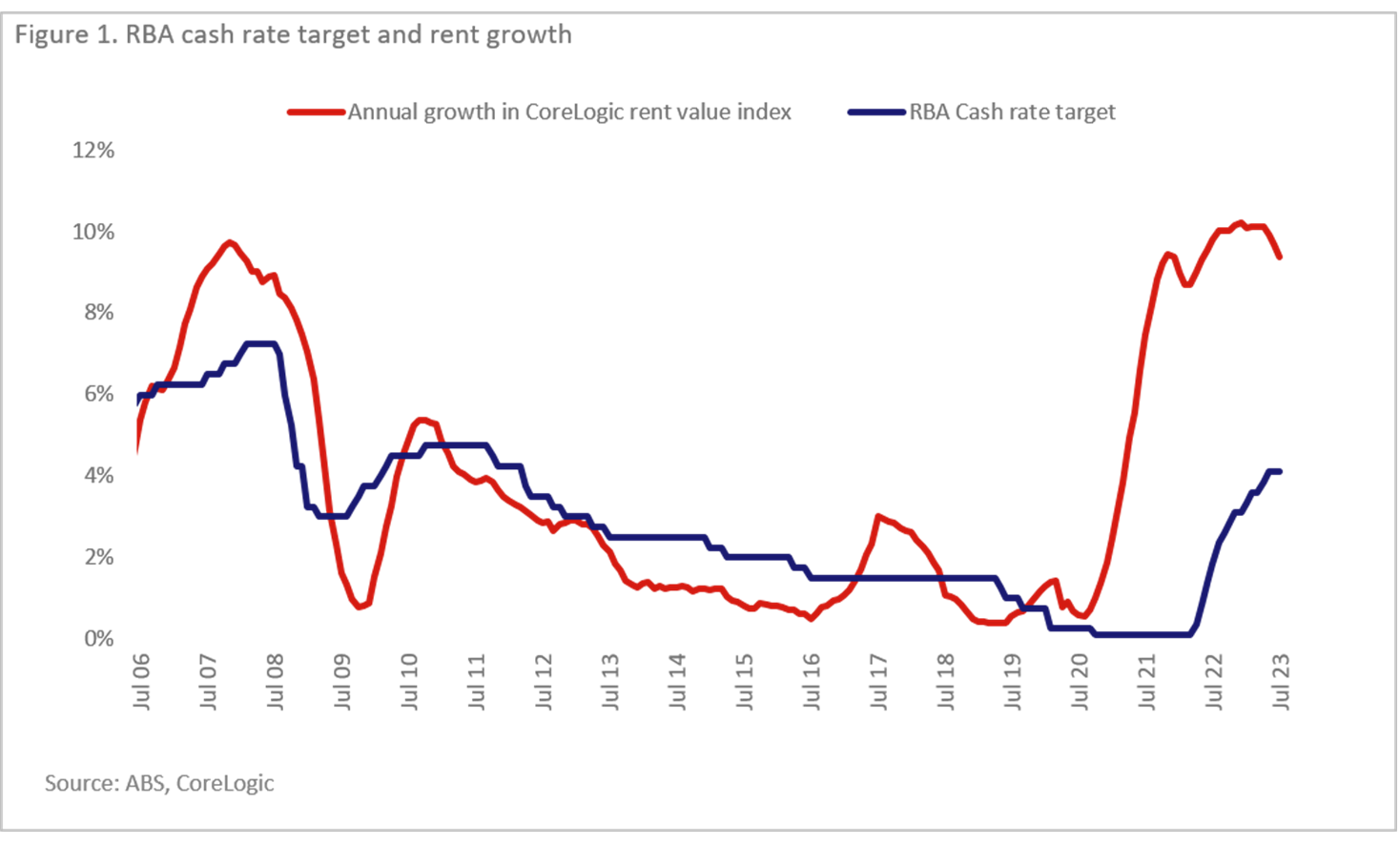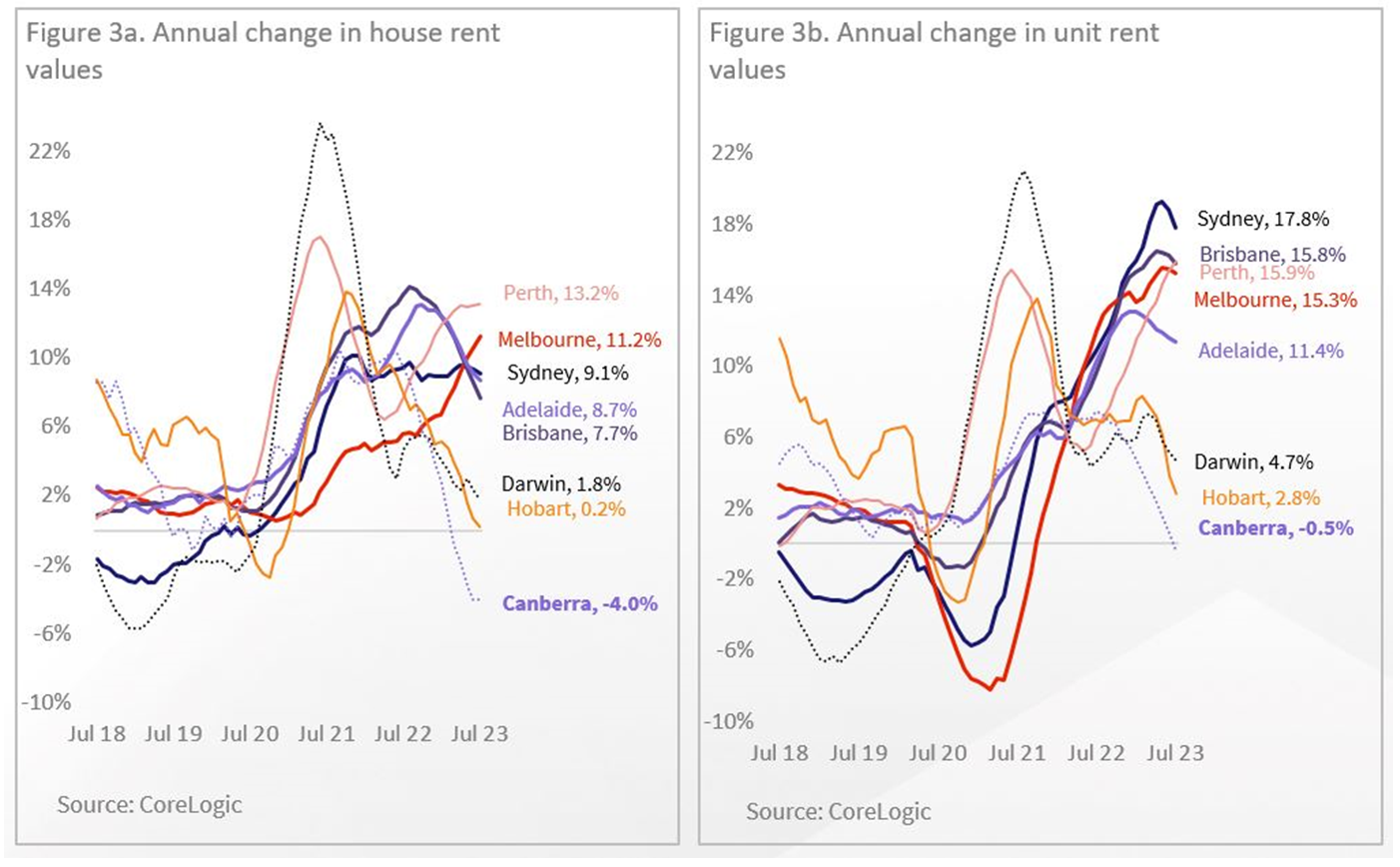

Slowing rent growth is anticipated to be a key trend in the housing market in 2024. Elizabeth Owen (pictured above), CoreLogic head of research, explained three reasons why.
Annual growth in rent values moves along with interest rates over time. See Figure 1 below to see how rolling annual growth in the CoreLogic rent value index is moving together with the RBA cash rate target.
“In 2024, each of the major banks is now forecasting a decline in the cash rate,” Owen said. “A reduction in interest rates could increase demand from housing investors, and increased investment purchases add to rental supply, which may serve to lower rent growth. Expectations that the RBA will be done with rate hikes in 2023 may even be contributing to an early recovery in investment activity.”
Figure 2 below shows an increase in new investment loans being taken out since the start of the year. The growth in investment loans is offsetting the rate at which new investment listings are flowing into the market.

Household incomes surged during the pandemic, driven initially by the largest peacetime fiscal stimulus package on record, then by tight labour market conditions. ABS data showed that total gross household income across Australia has averaged 1.4% per quarter since the onset of the pandemic – nearly double the growth rate in the five-years prior (0.8%).
CoreLogic pointed to income growth as likely one of many factors that led to the break-up of share-houses through the pandemic. With people being able to afford leases on more spacious properties, households spread out across the dwelling market, contributing to lower stock levels.
“However, income growth could be another metric that slows next year,” Owen said. “Monetary policy is taking effect in reducing demand in the economy, the unemployment rate rose to 3.7% through July, and annual growth in the WPI slowed to 3.63% in the latest print.
“As income growth slows, renting households may look to adjust their housing situation, and re-form share houses. In regional Australia, the average household size has returned to pre-pandemic levels, and is starting to rise across the combined capital cities.”
Due to high growth in rent values, rents now eat an estimated 30.8% of income nationally as of March, the highest level since June 2014. CoreLogic data showed rents have surged 29.3% since a low in August 2020, or the equivalent of a rise in median weekly rents of $134.
“Rent value growth is likely to slow because of base effects alone, but renters also tend to be on lower incomes, which means there could be a ceiling on how high rents can go before tenants adjust their housing preferences,” Owen said.
She said the shift can look like more share-housing, or people moving to more affordable areas.
“In the 12 months to June last year, ABS data showed more affordable rental markets like Logan – Beaudesert and Ipswich with the first and third highest volume of net internal migration across the country,” Owen said. “This overtook the Gold Coast, which had the highest net internal migration in the previous year. Such internal movements could ease demand in the most expensive rental markets, bringing down growth in the national rents.”
In most rental markets, rent growth is either flattening out or moving lower. Canberra rents are firmly in decline, while Hobart house rents appear as though they will soon follow. See Figure 3 for the rolling annual growth in house and unit markets across capital cities.

A handful of SA4 markets also saw rent values decline in the 12 months to July. This included the South East of Tasmania, which was down -4.5%, the Southern Highlands and Shoalhaven, down -3.8%, and the Capital Region of NSW, down -1.3%, CoreLogic reported.
To read the full CoreLogic article, click here.
Use the comment section below to tell us how you felt about this story.
